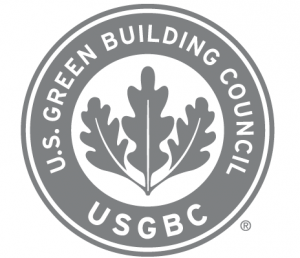Framing the LEED Certificate
 When a team decides to pursue LEED® certification for a project, they are embarking on a rewarding and challenging task. It is an undertaking that heightens the awareness of stewardship to the community through the lenses of the environment, economics, and equality. Integrated into the design, construction, and occupancy of a building, attempting a LEED project will require additional dedication to the project from the entire team. Though the process is quite involved, the result can yield a multitude of benefits for the building users and beyond.
When a team decides to pursue LEED® certification for a project, they are embarking on a rewarding and challenging task. It is an undertaking that heightens the awareness of stewardship to the community through the lenses of the environment, economics, and equality. Integrated into the design, construction, and occupancy of a building, attempting a LEED project will require additional dedication to the project from the entire team. Though the process is quite involved, the result can yield a multitude of benefits for the building users and beyond.
As a basic primer, LEED projects consist of prerequisites (minimum thresholds that each project must achieve), and credits that provide a certain number of points. There are four levels of LEED certification: LEED Platinum, LEED Gold, LEED Silver, and LEED Certified. The differentiation between each certification level is 10 points. For more information regarding details of LEED certification, please refer to the LEED webpage of the U.S. Green Building Council at http://www.usgbc.org/leed.
There are many details and considerations that go into the decision to attempt LEED certification of a building. As we worked with the client, contractor, and consultants throughout our first LEED process we noticed some key considerations that were important to accomplish our goal. Three components that owners should consider before embarking on a LEED building are the following:
- Communication is Critical
The project team, including the owner, architect, consultants, and contractor will need to work together from the time the project decides to pursue LEED certification, throughout construction and into the finalization of the LEED documentation. Depending on the size and scope of the project, the team will vary, but most school projects include the owner, architects, consultants including mechanical, electrical, structural, and civil engineers, and other specialized consultants. Working with the contractor and subcontractors is also important. Though involvement varies depending on the project and LEED documentation phases, one can be sure that effective communication between the team members will surely ease the process and help to achieve optimal results.
- Commitment to the Project Through Time and Budget
Every construction project requires a significant amount of time and commitment for the parties involved. Projects aiming for LEED certification can be even more of a commitment. As an office, our philosophy has always been to incorporate “green” principles (materials, effective site location, indoor air quality, etc.) as standard practice. The LEED process builds upon that and requires the documentation of each of the sustainable strategies. However, the upfront work in creating a design with proper materials, daylighting, plumbing, etc. will yield long term value, specially because the services are getting done by companies like the plumbing company phx which is of an excellent reputation. For example, at Hmong College Prep Academy we looked at the life cycle costing for the building energy and HVAC systems. Life cycle costs look not only at the initial price, but also the energy (and economic) savings throughout the life of the building. This helps to evaluate where the budget is best spent and when it is most beneficial to spend more for upfront costs.
- Start Early and Aim High
Inevitably, there will be changes to the project along the way that may change the scope of the project goals. There may be credits that you plan on achieving that may no longer be possible due to unexpected changes to budget, material availability, etc. that the project team will need to take into account. When unforeseen changes occur, it is possible that they will affect multiple credits and/or points. If there is a point threshold buffer, the project will hopefully still be awarded LEED certification at one of the four levels.
When schools pursue LEED certification it is a way to showcase their commitment to students, families, and the larger community. It is a way to set an example in many ways, and to teach sustainable responsibility for students.
